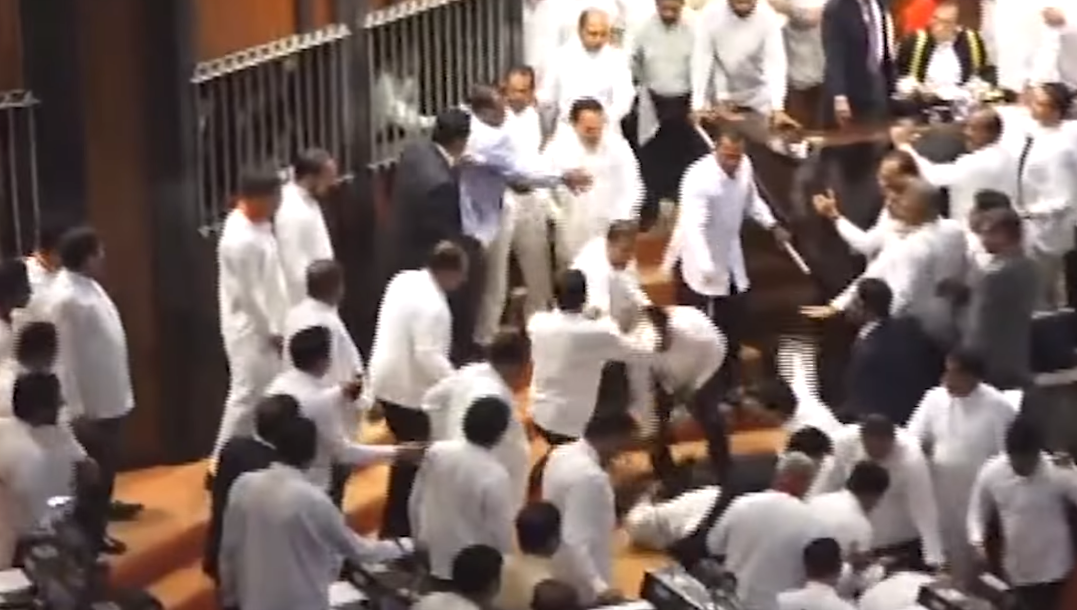On 15 November, the Sri Lankan parliament erupted in a brawl over a no-confidence motion passed against the newly appointed prime minister, Mahinda Rajapaksa. Punches were exchanged in a factional fight between opposition parties that supported the no-confidence vote and Rajapaksa's supporters.
This is just one of many clashes to come out of a political crisis that has engulfed the country over the past month and has now escalated to the level of a constitutional crisis. The cracks in the top layers of society are making way for intense political and social explosions throughout the island.
The motion of no confidence came only weeks after President Maithripala Sirisena, who belongs to the nationalist Sri Lanka Freedom Party (SLFP), dissolved the government and ousted Prime Minister Ranil Wickremesinghe of the liberal United National Party (UNP), over allegations that he was plotting to assassinate Sirisena. Following that, he appointed former-president Rajapaksa as prime minister. Seeing that Rajapaksa could not immediately get a majority to form a new government, Sirisena went ahead and dissolved parliament, calling snap elections in early January 2019.
But the UNP, in turn, formed a new coalition of opposition parties (which together constitute a majority), and called for the reinstatement of Wickremesinghe as prime minister. These parties also submitted petitions to the supreme court to overturn the prorogued parliament and delay the snap election to allow for Wickremesinghe to display his majority support in parliament.
The supreme court acquiesced, delaying the suspension of parliament and putting a stop to the snap election. The result was a motion of no confidence, which was passed by 122 of the 225 MPs present. President Sirisena however, has refused to accept the result, as it was taken during his orders to prorogue parliament. He has stated he will carry through elections in January. Since then, parliament has been completely paralysed, with daily twists and turns; and all manner of trickery and maneuvers by one side or another to impose their will on events.
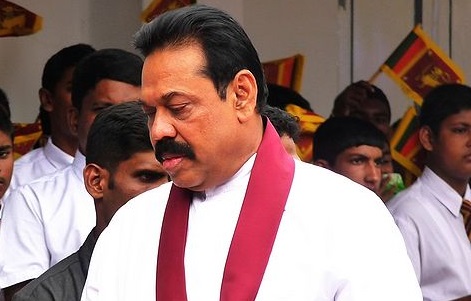 President Sirisena dissolved the government; replaced liberal Prime Minister Wickremesinghe with former-president Rajapaksa (pictured). Rajapaksa then broke with Sirisena and declared he'd run under the nationalist, right-wing SLPP in an upcoming snap election / Image: Rajith Vidanaarachchi
President Sirisena dissolved the government; replaced liberal Prime Minister Wickremesinghe with former-president Rajapaksa (pictured). Rajapaksa then broke with Sirisena and declared he'd run under the nationalist, right-wing SLPP in an upcoming snap election / Image: Rajith Vidanaarachchi
Sirisena’s appointment of Rajapaksa is no less controversial than his dismissal of the previous government. Both men belong to the Sri Lanka Freedom Party (SLFP), of which Sirisena was the general secretary. In fact, Sirisena was the health minister in Rajapaksa’s cabinet until 2015. But then he left the government, splitting the party in two, to run against Rajapaksa. The bizarre outcome was that half of the SLFP formed an opposition in parliament; while the other half, headed by Sirisena, stitched together Sri Lanka’s first national unity coalition with SLFP’s historical rivals, the UNP. They ran a joint campaign, based on anti-corruption rhetoric, and claiming they wanted to hold Rajapaksa “accountable” for war crimes committed during the last years of the Sri Lankan civil war (1983-2009). Sirisena clearly forgot his own complicity as a health minister and general secretary of the party during that conflict. The fact that only three years later he appointed Rajapaksa as his prime minister speaks volumes about his hypocrisy.
Of course, all is not forgotten either. Just weeks after his appointment, on 11 November, Rajapaksa defiantly declared that he has severed his five-decade-long ties with Sirisena and their old party and that he will run under the nationalist, right-wing party, the Sri Lanka People’s Party (SLPP) in the upcoming snap election. This appears to be a fatal blow to Rajapaksa’s old party, the SLFP, which is hanging by a thread.
Austerity provoking working-class struggle
Essentially, this constitutional crisis is a reflection of the crisis of Sri Lankan capitalism, which is stuck in a blind alley. The rise of the UNP-Sirisena alliance was more due to the unpopularity of the Rajapaksa government than anything else. Amongst wide layers of the population – in particular Tamils, who were the target of Rajapaksa’s Sinhalese nationalism – there was rising anger against corruption and authoritarianism. But only three years in, the coalition is thoroughly discredited, as anger is rising amongst the mass of the population. A Financial Times report titled Sri Lanka, State of the Economy 2018 stated the following:
“Some of the harder reforms that came with the IMF programme imposed a heavy burden on household incomes as a result of higher taxes. This included an unpopular increase in the Value-Added Tax (VAT) to start shrinking a large fiscal deficit that was partly the result of populist adventurism in the run up to the 2015 elections.
“The impact on cost of living was unfortunately made worse by adverse weather that disrupted agricultural production in 2016-2017. Added to this, slow growth meant modest wage gains and job creation; in fact, Sri Lanka’s employed to population ratio has remained stagnant at 37% in this period. Against this backdrop, higher prices on food and other essentials were sufficient for the public’s mood to swing dramatically and provoke a voter backlash at the much-delayed Local Government polls in February 2018. This first test of electoral popularity for the Government deepened the cracks in the ruling coalition.”
In 2016, Wickremesinghe drove up the VAT tax from 11 percent to 15 percent on all household consumption in order to receive a $1.5 billion dollar, three-year IMF loan. At the same time, the falling rupee increased the price of imports. According to the Economist, these two factors have increased inflation from 2 percent to 8 percent, while wages remained stagnant.
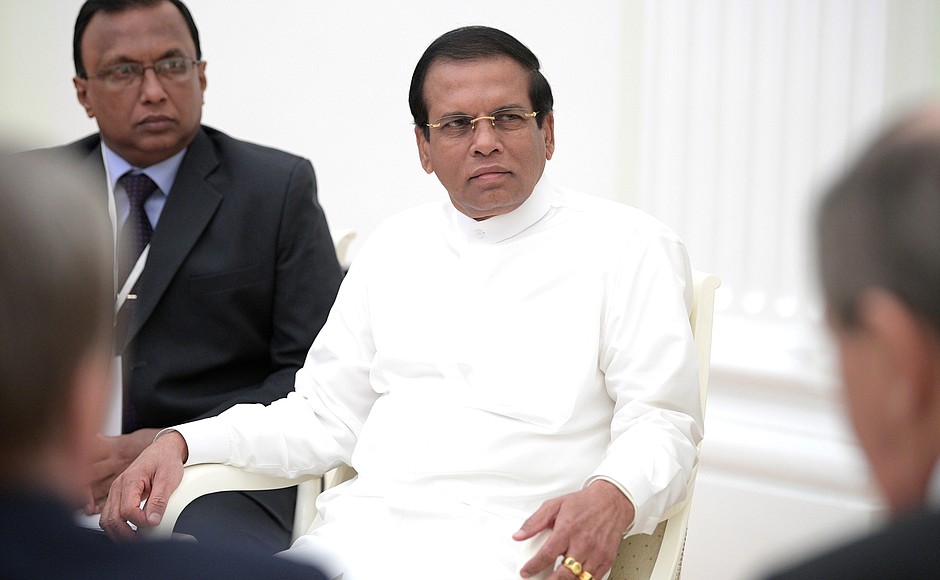 Sirisena is demagogically using rising dissatisfaction to strike blows against the UNP / Image: PoR
Sirisena is demagogically using rising dissatisfaction to strike blows against the UNP / Image: PoR
In general, the period of the unity coalition has been characterised by anti-working class and anti-poor measures and a series of unpopular privatisations of state-owned enterprises. In tandem with this, the number of strikes and protests has been on the rise. The report mentioned above states that “the number of man days lost as a consequence of strikes in the private sector has risen to an annual average of 80,000 days during 2015-2018 compared to a figure of 50,000 during 2012-2014”.
The policies of privatisation and restructuring state-owned enterprises have prompted large public sector union actions. In the summer of 2018 railway workers went on strike, grinding the country to a standstill over stagnant wages. On 15 October, petrol workers threatened to strike if the government sold more oil tanks to the Indian Oil Company (IOC). The Ceylon Petroleum Trade Union Collective has gone through a few strikes in the last two years over this very issue. In response, the government has deployed the army to gas stations to pump fuel.
The rising anger towards the coalition was shown in the February 2018 local elections, where Rajapaksa’s supporters won a sweeping victory, in what was widely seen as a referendum on the coalition. His new far-right wing party, the Sri Lanka People’s Party (SLPP) won 239 out of the 340 contested seats (24 municipal councils, 41 urban councils and 275 divisional councils) across the country.
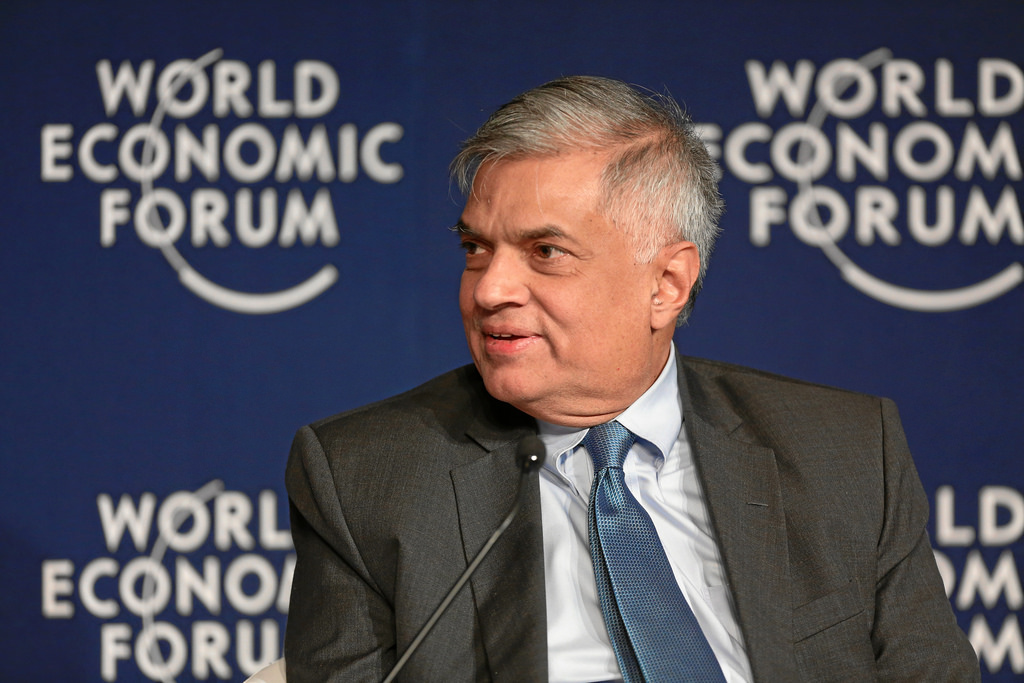 The UNP has formed a new coalition of opposition parties, which together constitute a majority, and called for the reinstatement of Wickremesinghe as prime minister / Image: WEF
The UNP has formed a new coalition of opposition parties, which together constitute a majority, and called for the reinstatement of Wickremesinghe as prime minister / Image: WEF
All of this points to the discontent bubbling among the vast majority of people in Sri Lanka against the pro-market policies of the unity coalition. Sirisena is demagogically using the rising dissatisfaction to strike blows against the UNP and Wickremesinghe. Conveniently forgetting that he himself was once a part of the same government, on 20 January, he stated that “for the past two years, the economy was managed by the UNP, however, I need to emphasize that from this year onwards, I will take the leadership in handling the economy of this country through the National Economic Council. This is to reduce the cost of living of the people”. Though the UNP has been the most aggressive advocate of privatisation, Sirisena has also been widely discredited due to these policies. Seeing the political crisis and the revival of Rajapaksa’s popularity, he is trying to save his own skin before the inevitable disintegration of the government.
Rajapaksa, meanwhile, is playing his own demagogic game. As appointed prime minister, Rajapaksa has made promises to lower the cost of living and enact reforms such as cutting down import levies on major basic food items like dhal, chickpeas and sugar. He has also promised to write off millions of dollars of loans incurred by small farmers through commercial banks during the past three years along with a host of other reforms that will affect the low-earning population in Sri Lanka.
Meanwhile, he is also calling for Sri Lanka’s poor to tighten their belts in order to pay for the economic crisis. In the end, the deep public debt will make Rajapaksa's current package of promises fleeting, and instead of reforms will put austerity on the agenda.
Foreign debt and dependence on China
The economic room for manoeuvre is very slim and a new government will not be in a stronger position than the previous one. Sri Lanka is drowning in up to $55bn of foreign debt, or 77 percent of its GDP, which is a higher ratio than India, Pakistan, Nepal and Malaysia. Lenders are looking to get back at least $17bn between 2019 and 2023. In 2018 alone, the Finance Ministry stated that the government’s scheduled debt payments came to $12.68bn. Meanwhile, the total state revenue was expected to amount to only $14.8bn! The only way to solve this problem under a capitalist framework is via massive austerity against the workers and the poor.
China has been the biggest foreign lender to Sri Lanka. From 2010 to 2015, Rajapaksa opened the doors to Chinese lenders, accepting $4.8bn dollars worth of loans. The loans were used to build an airport and seaport in the south of Sri Lanka, close to Rajapaksa’s hometown. In 2016, China extended another $6bn to Sri Lanka to keep up with the infrastructure projects.
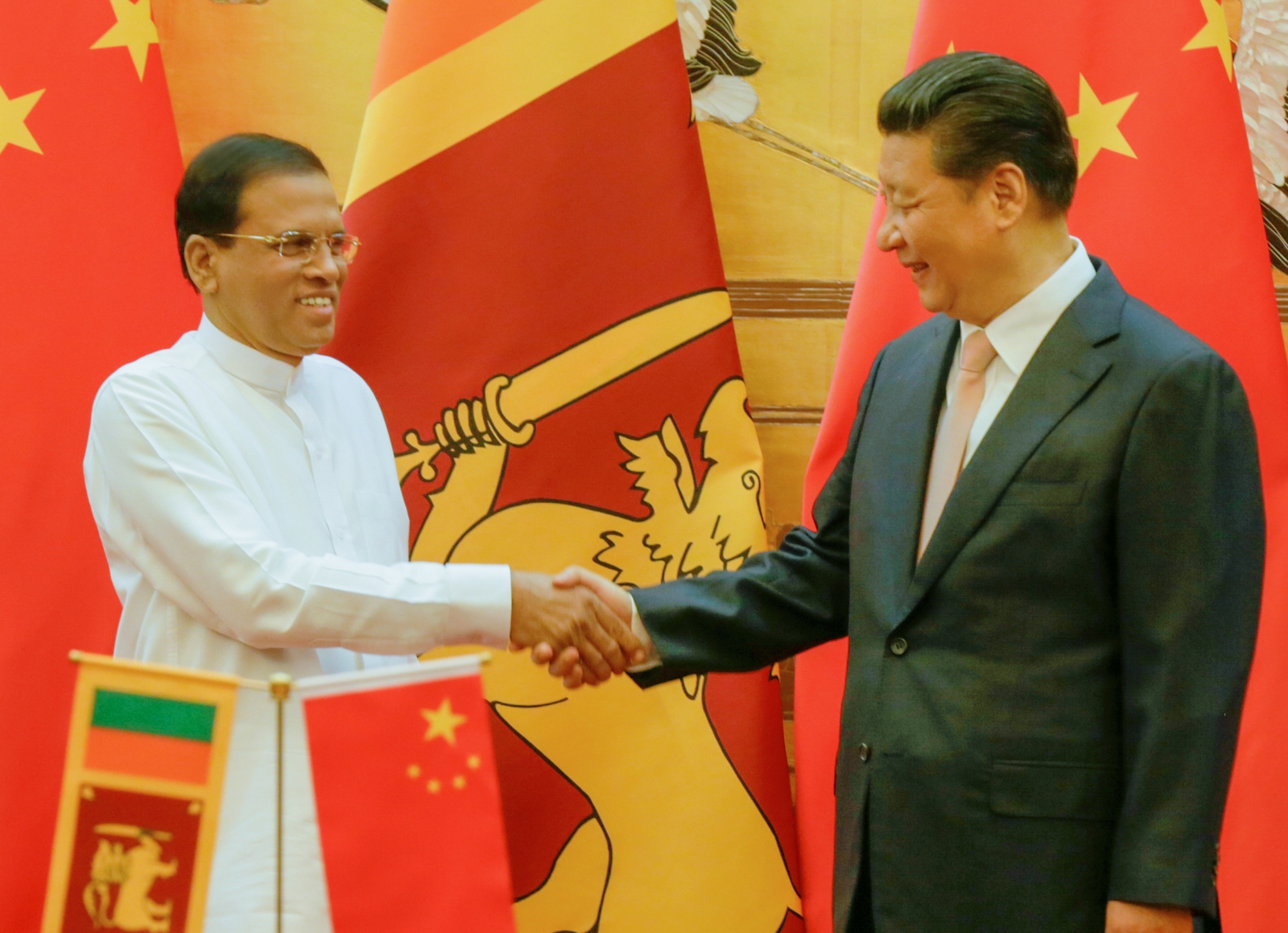 China has been the biggest foreign lender to Sri Lanka / Image: Flickr, Maithripala Sirisena
China has been the biggest foreign lender to Sri Lanka / Image: Flickr, Maithripala Sirisena
For an small, strategically placed island like Sri Lanka, imperialist influences play a dominating role. In the past period, Chinese imperialism has increased its footprint throughout the region. Its One Belt, One Road Initiative aims to see China dominate trade routes throughout the Asian hemisphere. A series of ports, railways, airports and other key infrastructural projects benefiting China have been built with Chinese loans. In turn, these countries become trapped in a vicious circle of indebtedness to China. Sri Lanka is no exception. Chinese investors under the Rajapaksa regime pushed out Indian imperialist influence over the island and sidelined western imperialism as well. China armed the Sri Lankan army in the final years of the civil war, leading to a gruesome body count among the Tamils. In return, Rajapaksa opened up various infrastructure projects for China. India felt threatened when Chinese military submarines were docked in Colombo in 2014, adding to the fear that China’s One Belt, One Road Initiative also meant increasing China’s military influence across Asia. Hence, for his services, China spent millions in Rajapaksa's re-election campaign in 2015 and today is the only imperialist power that supports his return as prime minister.
One of the aims of the national unity coalition was to break away from China’s grip and get the ruling coalition back to the table with western imperialism. The coalition blamed Rajapaksa’s regime for incurring billions of dollars of debt from Chinese loans for infrastructure projects, returning very little profit. But it conveniently forgot that it was carrying out similar policies, simply leaning more on western funding, coming from the likes of the IMF. In 2015 India and the USA threw their weight behind an anti-Rajapaksa coalition. Sirisena pledged to find a ‘middle path’ to foreign policy that would not isolate India and the west. However, since 2015, both factions of the coalition have been divided on which imperialist power to cosy up to. Sirisena has looked to both India and China, while Wickremsinghe has depended on India and America.
The return of Rajapaksa’s demagogy
Like Sirisena, Rajapaksa is a demagogue trying to lean on the masses, particularly the majority-Sinhalese rural and working class who form his base. Coming into office in 2005, Rajapaksa had promised to bring an end to the country’s 26-year civil war, along with enacting a number of economic commitments to creating jobs, continuing free education and welfare payments to the poor. This rhetoric gained an echo amongst the war-weary population.
Of course, most of these promises were not kept. Instead, Rajapaksa carried out drastic cuts to the public sector, asking people to make sacrifices for the sake of national security. Nonetheless, Rajapaksa was seen to have brought the war to an end, which was a relief to the vast majority of the population on the island. Rajapaksa’s nationalist rhetoric also appealed to millions of Sinhalese people, who had lost their homes and families to the war. In the absence of a working-class leadership to cut through the reactionary, sectarian divisions behind the civil war and put a class perspective on the agenda, nationalist chauvinists like Rajapaksa could step in and fill the vacuum.
Today, the Sinhalese rural population in the south still remember the bloody end to the civil war and how scores of Sinhalese youth were drafted and killed. They remember the economic hardships that the civil war imposed on the most downtrodden. Rajapaksa exploited this brutal period with his promises of jobs and basic food subsidies. Although he didn’t carry out most of his promises, his government did increase public spending. In fact, according to the last government, state-owned enterprises more than doubled in the period 2009–2014. The fact that these measures were based on deficit spending, which was paid in the form of austerity by the following Sirisena Government, ironically served to maintain a certain authority for Rajapaksa amongst the poorest layers of society. The New York Times wrote that, “many Sri Lankans see Mr. Rajapaksa as a hero for bringing that war to a decisive close. And the economy has worsened since he left office, making his time at the helm seem like brighter days.” On this basis, with the rising anger towards the anti-working class measures of the previous government, Rajapaksa became increasingly popular.
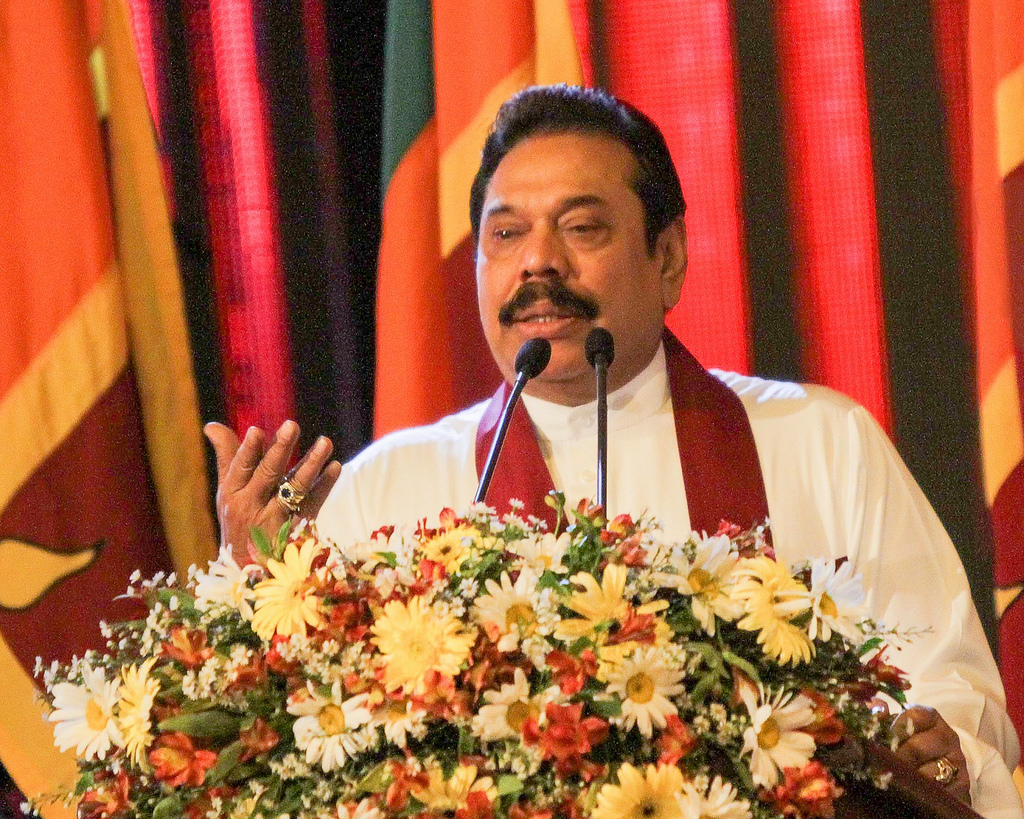 Rajapaksa is a demagogue trying to lean on the masses, particularly the majority-Sinhalese rural and working class who form his base / Image: Flickr, Mahinda Rajapaksa
Rajapaksa is a demagogue trying to lean on the masses, particularly the majority-Sinhalese rural and working class who form his base / Image: Flickr, Mahinda Rajapaksa
At the same time, while leaning on nationalist demagogy, during his time in power from 2005 to 2015, Rajapaksa severely curtailed democratic rights throughout the island. Using the Prevention of Terrorism Act (PTA), Rajapaksa further emboldened the state, military and police with sweeping powers to arrest and detain Tamil youth and workers in the Northern and Eastern provinces without trial, and subjected thousands to an intricate and far-reaching torture system. His regime also refused to acknowledge the war crimes it committed, or the slaughter of tens-of-thousands of Tamils during the civil war. Beyond persecution of the Tamils, Rajapaksa also suspended freedom of speech, and carried out large-scale abductions of left-wing journalists and civil rights activists throughout the island, including Sinhala citizens. It also brutally suppressed workers’ protests, often sending in the military to gun down trade unionists.
Many Tamil nationalists voted for the coalition government in 2015, hoping to alleviate measures such as the PTA. However, far from aiding the Tamil cause, the coalition’s draft version of a law called the Counter Terrorism Act (CTA) has only expanded the definition of terrorism, opening the way for the state to further suppress and criminalise labour and demonstrations; in addition to targeting militant trade unionists, student protests and any political activity by oppressed groups. Clearly, neither Rajapaksa’s old regime nor the unity coalition are no friends of the Sri Lankan working class. They merely represent the narrow interests of different wings of the ruling class.
The end of the Rajapaksa regime in 2015 made way for Sirisena’s stitched-up coalition between the UNP and the SLFP. This provoked a sigh of relief for ruling class pundits in Sri Lanka, who understood that a continued Rajapaksa presidency presented a danger to peaceful bourgeois rule. What the unity coalition yearned for was to rule the roost without the threat of another civil war. Yet only three years after its formation, the unity coalition has completely fallen apart.
The UNP is not the lesser of two evils
Wickremesinghe has now formed a coalition with various ethnic and left parties to keep Rajapaksa out of parliament, consisting of Janatha Vimukthi Peramuna (JVP), the Tamil National Alliance (TNA) and the Sri Lanka Muslim Congress (SLMC). Together with the UNP (which already makes up 100 seats in a 225-seat assembly) this coalition has a majority. It was this opposition that passed the no-confidence vote in parliament. Sri Lanka’s history of Tamil oppression has segregated the Tamil population into their own nationalist parties. At the end of the civil war, the moderate TNA came to power in the Tamil-dominated northern and eastern provinces. Abandoning the ultra-left guerilla tactics of the Tamil Tigers, the TNA sought a parliamentary road to national autonomy. However, the idea of successful negotiations with a government that is implicated in the death of 100,000 Tamils is utopian.
In 2015, Sirisena promised the TNA reconciliation in the form of holding the military to account for war crimes, carrying out provincial devolution of powers for the Tamil areas, in return for backing the unity coalition. The TNA, as the main Tamil party cooperating with the ruling coalition, supported the coalition, marrying the aspirations of the Tamil people to Sri Lankan capitalism. Today, the unity coalition has not delivered on any of those promises.
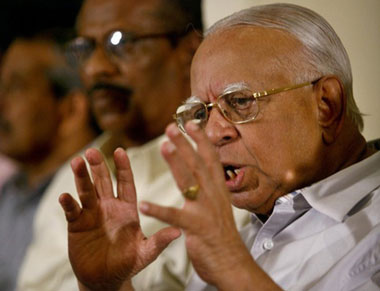 The Tamil masses must understand that the TNA’s aspirations to support the UNP will not solve the problems they face. The UNP is not a 'lesser evil' / Image: vivatamils
The Tamil masses must understand that the TNA’s aspirations to support the UNP will not solve the problems they face. The UNP is not a 'lesser evil' / Image: vivatamils
At present, the TNA throws its support behind the UNP, to prevent Rajapaksa from being prime minister or president. Some in Sri Lanka have argued that, given the prospect of Rajapaksa, the UNP is the lesser of two evils. However, it is important to note that the national unity coalition representing both the UNP and the SLFP have the same capitalist aims of crushing the Sri Lankan working class, peasantry and trade unions and delivering harsh blows of austerity to the island. The differences will be over the way in which to accomplish this without rapidly provoking huge unrest.
The UNP embraces free trade and privatisation policies but these run counter to the interests of rural southern Sri Lanka, which has long been the base of Sirisena and Rajapaksa. The large swathes of rural areas in southern Sri Lanka are often alienated from the middle-class and petit-bourgeois aspirations of the UNP-dominated capitals of Kandy and Colombo. This is the real reason that Sirisena’s ousted Wickremsinghe. His economic policies were provoking widespread discontent among his base.
The Tamil masses must understand that the TNA’s aspirations to support the UNP will not solve the problems they face today. Unemployment is higher in the northern and eastern provinces, a military presence still persists, missing activists have not been returned safely and tens of thousands live in poverty in the post-war period. The UNP and SLFP have not fixed these problems during the unity coalition and will not do so now. The Tamil people must find a way forward for their national and economic aspirations on a socialist platform.
How to fight right-wing demagogues?
Lenin once said that all politics is concentrated economics. Austerity has already provoked massive strikes and demonstrations from below, and has discredited the government among the Sri Lankan masses. Only the lack of any viable labour leadership to lead the struggle against austerity has allowed for the return of the “strongman” populist Rajapaksa.
While Rajapaksa's electoral win many have been a landslide victory, the Economist states that the results were mediocre given the confusing electoral set up:
“Under the old rules Mr Rajapaksa’s new party vehicle, the Sri Lanka Podujana Peramuna (SLPP) could indeed claim to have won a crushing victory, even though it got just 44.6% of votes. In practice, under the new rules it will have to find partners to run any council where it has less than 50% of seats. Government supporters are also keen to point out that both in percentage and in total numbers, Mr Rajapaksa got fewer votes to ‘win’ this election than he did in the election in 2015 that he lost to Mr Sirisena.”
Coupled with the low turnout for Sirisena’s SLFP and the UNP, the working class and peasantry could have easily been won to a working-class party providing a genuine socialist alternative. The only way to defeat Rajapaksa and his capitalist nationalist policies is not by voting for the lesser evil of the UNP but by forming a viable workers’ party based on a genuine socialist platform
The tragedy of Sri Lanka is it once had an independent, working-class organisation, the Lanka Sama Samaja Party (LSSP), which had organic ties to the trade unions and was able to lead the workers, peasants and ethnic minorities in common struggle. Today, nothing remains of the erstwhile Trotskyist LSSP. The rest of the so-called left in Sri Lanka have splintered off into smaller groups or have completely allied with capitalist parties.
We cannot pick sides between warring factions of the same corrupt ruling class. It is the duty of the trade unions of the island to divorce themselves from the UNP, the SLFP and Rajapaka’s SLPP. Today, there is no independent labour party representing workers and peasants. Because of this, the rotten two-party system of the UNP and the SLFP has dominated the electoral plane.
The task is to rebuild an independent workers’ party that is not only independent from the capitalist parties on the island, but also one that is armed with a fighting socialist programme. The foreign debt and the ongoing crisis of capitalism mean these questions will not quickly be resolved. On the contrary, on the basis of capitalism, further austerity, falling living standards, and chaos represent the only available future – and in the long run without the emergence of a class-based, mass socialist workers’ party we cannot exclude new coups, or even a new civil war.
Sooner or later, the Sri Lankan masses, who have proud and militant socialist traditions, will find their way back to the road of socialism. It is only through creating a militant workers’ party, equipped with a bold socialist revolutionary programme, that we can defeat the demagogue Rajapaksa. It is only through the socialist transformation of society that the plight of the Sri Lankan masses can finally be solved.
